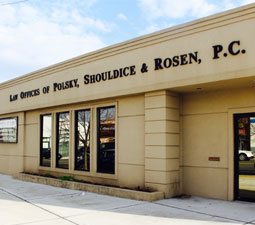
THE OCCUPATIONAL SAFETY AND HEALTH ADMINISTRATION (OSHA)
In 1970, the Occupational Safety and Health Act created OSHA within the Department of Labor. Its mission is to reduce workplace hazards as well as implement programs that focus on the health and safety of workers. OSHA regulations apply to construction sites as well. As our lawyers in New York can tell you, as a construction worker you have certain legal rights under the law. They include:
- Your employer must have copies of OSHA regulations, rules, requirements, and standards available for you to access while in the workplace.
- You have the right to access records of work-related illnesses and injuries.
- You can request your OSHA area director to inspect your workplace if you believe a hazardous condition exists or that OSHA safety violations are occurring. During the inspection, an authorized employee representative can accompany the OSHA inspector.
- You have the right to a copy of the test results resulting from workplace hazard inspections.
- You can request OSHA to withhold your name on any written complaints you sign and submit to them regarding safety violations made by your employer.
- You cannot be retaliated against or otherwise discriminated against by your employer for having filed a complaint about them to OSHA.
YOUR EMPLOYER’S SAFETY OBLIGATIONS UNDER OSHA REGULATIONS
If your employer’s violation of any of the following contributed to your accident and subsequent injury, contact our New York Workers' Compensation lawyer immediately.
- They must provide a workplace that is free of any recognized hazards.
- They must ensure that their employees have the use of safety equipment and tools.
- They must inform their employees of all applicable health and safety standards as set forth by OSHA.
- They must prominently display the OSHA poster that explains the employees’ rights under the OSH Act.
- They must create an understandable and clearly written method of communication that informs employees of potential hazards by employing material safety data sheets as well as some form of an employee training program.
Types of OSHA Violations
Willful
An example of a serious violation would be if the employer did not implement adequate safety procedures for equipment that had caused prior crushing injuries. A documented willful violation may be used against an employer when an injured worker is seeking Workers' Compensation. Willful violations are the most serious because they show disregard for employee health and safety.
Serious
A documented serious violation may be used against an employer when an injured worker is seeking Workers' Compensation. Failure to ensure that employees wear PPE such as hardhats when potential falling debris hazards are present is an example of a serious violation.
Other-than-Serious
Failure to provide copies of safety regulations and failure to post required documentation in work areas are considered other-than- serious OSHA violations. Other-than-serious violations should be available for reference by the one who was injured, and their Workers' Compensation attorney for use in legal proceedings. There are large fines for Other-than-serious violations, but inspectors can choose not to impose a fine.
Repeated Violation
OSHA may cite an employer for a repeat violation if an employer is cited for a particular violation and a subsequent inspection shows another similar violation. Inspectors cannot consider a violation of the same type to be a repeat violation if the employer contests the original violation. A documented repeated violation can be used against an employer when an injured worker is seeking Workers' Compensation.
De Minimis
For example, when the distance between rungs exceeds the distance stated in OSHA regulations a de minimis violation can be filed against an employer. A de minimis violation is a technical violation of OSHA rules that have no direct impact on health or safety. A de minimis violation may still create a hazardous condition which leads to an injury.
Failure to abate
If the employer doesn’t remedy the condition before the specified date, it will be liable for a large fine per day from the day after. Failure to abate means that the employer failed to take corrective action following a prior documented violation. Failure to abate violations should be available for reference by the one who was injured, and their Workers' Compensation attorney for use in legal proceedings.
If you feel unsafe in your workplace and believe that your employer is violating OSHA rules, contact an attorney at Polsky, Shouldice & Rosen, P.C. for help.


